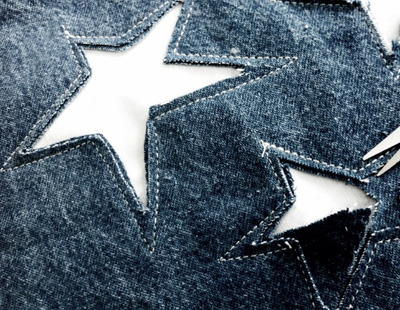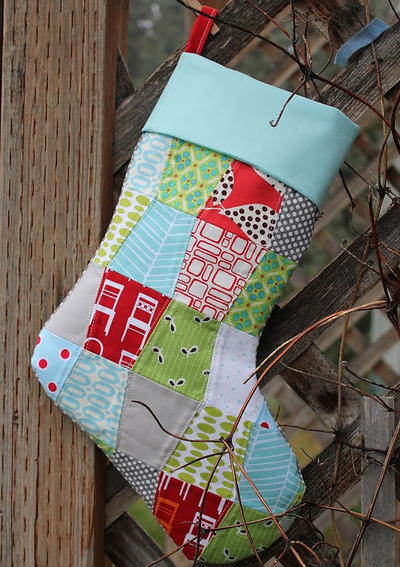Quilt Applique Techniques
Learn how to applique by hand or machine. Learn the many other quilting applique methods, too!
Before we get into the techniques, what is applique? Applique is "a cutout decoration fastened to a larger piece of material" according to Merriam-Webster. In quilting, applique is used to add complementary textures and designs to quilts or quilt blocks. However, there are many different ways to apply appliques to fabrics.
Applique quilts are some of our readers' favorite types, which is why we are detailing the most popular Quilt Applique Techniques. There are several different ways to attach applique designs to quilts besides by hand and machine.
We will begin by going over when to applique by hand or by sewing machine. Then we will go into different techniques that can be done using either method. When we explain how to do applique in different ways, we will also let you know some tips as well as pros and cons for each technique.
Quilts that use applique pieces range from simple to complex. You can applique basic shapes or full images and scenes, like gardens, animals, and landmarks. It's such an interesting idea that people love to experiment with.
Depending on what you want to applique and what materials you have on hand, some of these quilting applique techniques may be preferred over others. If you don't have an idea of what you want to applique, then make sure to check out the last section, which includes many quilt applique patterns to try.
Table of Contents
Find more applique projects to try here:
When to Hand Applique

Appliqueing by hand is a detail-orientated task but well worth the effort. When should you use hand sewing in applique? Small designs, as well as complicated designs, are ideal for hand applique. Also, applique designs that have dimension need to be sewn by hand.
It can be very relaxing to stitch by hand and applique is a great reason to do it. There are also many tools available to make hand applique easier, such as embroidery hoops and disappearing markers to hold and mark where to sew.
Image above is Happy Cactus Applique Pattern.
When to Machine Applique

Applique by machine is fast and easy. Machines allow for perfect stitches in a short period of time, though, sometimes it is difficult to achieve very detailed stitching with a machine. Machine applique is also excellent for special stitching or free motion stitching.
For large designs, use a machine to make the process speed by, allowing you to move on to your next step or project. If your stitching is going to be highly noticeable, then you may prefer the machine stitches over hand sewing.
When it comes to preferred machine applique techniques, Joanne from Thread Head says,
"My favourite technique for applique is still invisible machine applique. I find that it is very sturdy (I have used it on couch pillows that have been washed many times and the fabric has worn out before the stitching), so it is practical for quilting projects that get a lot of use.
It is also very easy to design your own applique patterns, and there are so many sources for inspiration.
Lately I have been adding simple designs to plain quilt blocks to make pillows covers, table mats and mug rugs. I have a new applique tutorial here and another applique tutorial for Valentine's Day here."
Image above is Vintage Flower Mug Rug.
Freezer Paper Applique

Freezer paper isn’t only for use in your kitchen! Head into your pantry and grab the freezer paper for another quilt applique technique. Quilting with freezer paper is a creative and resourceful way to applique.
Freezer paper is a great quilting applique method because the shiny side of the paper sticks to fabric. It is easily removable as well because there is no adhesive. It is also reusable, which is incredibly beneficial for patterns that have a repeating design.
How to Use Freezer Paper Applique:
To use freezer paper for applique, first trace the design with pencil onto the dull side of the freezer paper. Using the correct side is very important and the shiny side is the side that goes against the fabric to stick. Once you have traced the design, cut it out and put the shiny side down onto the wrong side of the fabric.
With a fabric marking pencil, trace the freezer paper shape onto the fabric and then cut about a 1/4-inch around the shape outline. Remove the paper and place into onto your quilt fabric. Then, finish with your stitching.
Freezer paper applique is an inexpensive and helpful technique for applique. It is easy to use without instructions or to use as a replacement for other techniques.
Image above is Freezer Paper Piecing.
Fusible Applique

Fusible applique is also referred to as raw edge applique or a combination of fusible and raw edge in the name. This applique technique uses fusible web.
Fusible web is an often permanent lightweight fabric that includes a thin layer of adhesive and paper backing (sometimes it is double-sided). This product can be found at craft stores or online in different sizes and yardage. Fusible web allows the applique to be attached (or fused) with the use of heat.
How to Use Fusible Web Applique:
To use it, follow the instructions on the label for tracing, cutting, and handling. You will then heat the paper with an iron.
You can stitch the applique but, since the piece is fused to the fabric, there is no need. The reason it is also called "raw edge" applique is because the edge of the fabric is shown instead of being tucked and stitched in.
Note: Most fabric does fray, so if you are leaving the edge you will want to use a fray stopping solution to avoid this.
Fusible applique is an easy and popular way to applique quilts, especially if you want to do it quick.
Image above is Fusible Appliques for Kids.
Reverse Applique

The techniques mentioned above involve the applique design being above your quilt fabric. Reverse applique is the opposite. The hole will be cut from your main quilt fabric and the piece of applique will be attached from below.
Reverse applique designs have a similar appearance to some patchwork designs or when a patch is used to fill holes in clothing, such as jeans. Reverse applique can use fusible web strips or freezer paper.
How to Reverse Applique:
To accomplish this type of applique, cut out your design on paper/fusible web/freezer paper. Cut out the design from your main quilt fabric. Then cut out a larger piece of your applique fabric, which can be a square or circle shape as the edges are going to be under the main fabric and not showing. You need enough to adhere and stitch around.
Adhere or hold the applique fabric underneath the main fabric cut out. Use the iron to fuse the two pieces of fabric if using fusible web or start stitching around the design if not using adhesive until finished.
Reverse applique creates a unique look and can be accomplished using other techniques mentioned above.
Image above is Reverse Applique Quilting Tutorial.
Applique Quilt Projects

The versatility of applique allows you to play with textures, colors, and designs. Heather from The Sewing Loft says,
"Applique is of my favorite techniques to use fabric left overs with. The potential of creativity is limitless.
I like to look at each layer of the design is another opportunity to addin my personal style. Consider using contrasting thread to "draw" details on your design like I did on this holiday pillow collection. With each pass of the needle, I can see my design take shape and come to life."
With the quilt applique patterns below, you will read whether it is a hand applique quilt or best made by machine. These applique quilt and block projects are fun and range in level of skill and ability to play around with the design.
- 3D Applique FlowersEasy to hand sew or machine sew, these sweet little fabric flowers are guaranteed to put a smile on anyone's face, and making these applique quilt designs won't take you more than an hour or so.
- Adorable Applique Family Tree QuiltAll you need to do is trace the handprints of your family members, make some appliques, and stitch them onto a gorgeous quilt using a sewing machine.
- Applique Butterfly GardenMake this gorgeous butterfly applique quilt pattern using hand or machine sewing or a combination of the two. This cheery Applique Butterfly Garden is a simple way to decorate your home for spring.
- Applique Hearts Quilted Wall DisplayUsing a machine to applique this Applique Hearts Quilted Wall Display makes this quilt pattern work up quickly. Make this quilt wall banner in fun colors to decorate a little girl's room or in classic red and pink to dress up the house for Valentine's Day.
- Appliqued Scraps Quilted Floor MatWith simple square appliques, the Appliqued Scraps Quilted Floor Mat is easy to sew up by machine or by hand. It can be used as a doormat, a small decorative rug, or a kneeling mat for the garden.
- Cardinal Applique PatternTake the time to hand applique this beautiful cardinal. You will be so proud and excited when you have finished this super cute craft!
- Felt Applique TutorialThis Felt Applique tutorial will walk you through how to make iron on appliques, how to apply iron on appliques, and then how to machine applique the shape onto a base fabric.
- Layered AppliqueCreate a professional look no matter what you're designing with fusible web and plenty of templates for this Layered Applique tutorial.
- Oak Leaf Applique BlockWith this Oak Leaf Applique Block, you'll have an easy quilting block project that decorates your quilt with a beautiful and simple applique design that can be created by hand or machine.
- Songbird, Trees and Sun Applique PatternsGet rid of leftover scrap quilt patterns by assembling them into chirping birds, fruitful trees, and warm suns. Once you've printed the three different templates, you'll be ready to applique using a machine.
What is your favorite way to applique?
Let us know in the comment section below!
Read NextNeedleturn Applique Part 1
Report Inappropriate Comment
Are you sure you would like to report this comment? It will be flagged for our moderators to take action.
Thank you for taking the time to improve the content on our site.




















